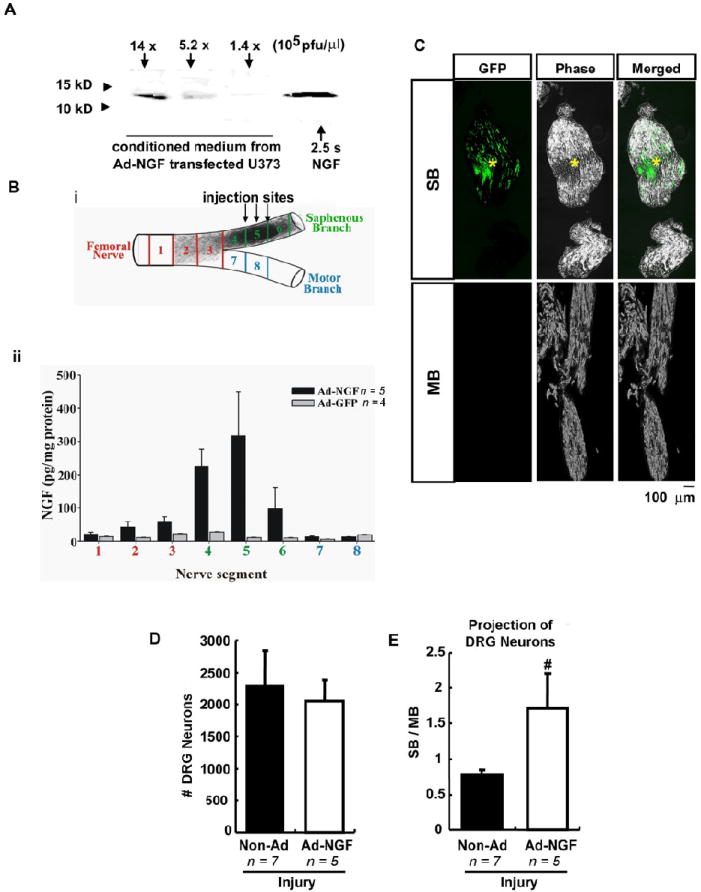Figure 3.

Ad-NGF administration significantly increased sensory neuron reinnervation to SB. A – C, Adenoviral-based transgenic overexpression of exogenous genes. Cultured U373 cells were infected with Ad-NGF of 1.4 × 105 pfu/μl, 5.2 × 105 pfu/μl, and 1.4 × 106 pfu/μl. Western blots of conditioned medium showed dose-dependent expression of NGF (A). For in vivo overexpression, Ad-NGF or Ad-GFP was injected along SB in the crushed femoral nerve. One week later, 3-mm long tissue segments were collected as illustrated and processed for NGF ELISA (B-i). ELISA results showed a dramatic increase of NGF expression along SB, but not MB, with the peak in Ad-NGF at the injection sites (B-ii). C, Fluorescent and phase imaging to show GFP expression along SB and MB one week after Ad-GFP administration on post-traumatic SB. D – E, One week after femoral transection, Ad-NGF was injected along SB, followed by double retrograde tracing at 3 weeks post-injury. Counts of labeled DRG neurons showed Ad-NGF treatment preferentially increased sensory neuron reinnervation to SB as opposed to MB (E) without changing the total number of regenerating sensory neurons (D). Ad-NGF, recombinant adenovirus encoding NGF; Ad-GFP, recombinant adenovirus encoding GFP; non-Ad, non-adenovirus; SB, saphenous branch; MB, motor branch. *, injection site; Scale bar, 100 μm. Values represent mean ± S.E.M; n = 5 – 7. # p < 0.05 compared to non-Ad group, analyzed by Student’s t-test.
